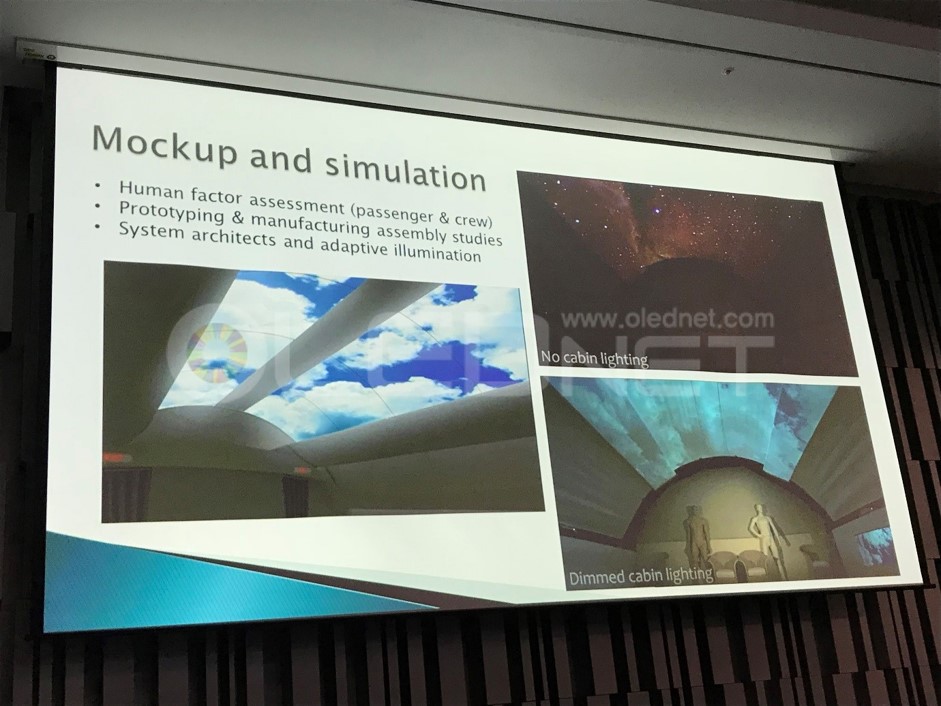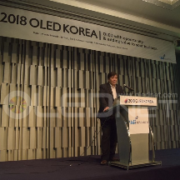OLED display to embroider the blue sky and stars inside the plane
“OLEDs will be installed on the ceilings and walls of planes to provide customers with a variety of images. It is expected that stars will shine in the ceiling at night and clear blue skies during the day time inside the future airplane.”
Dr. Julian Chang, associate tech fellow of Boeing, presented various advantages of OLED to be applied to the inside of planes in future at the ‘2018 OLED Korea conference’ hosted by UBI Research on March 7~8.

Explaining “OLEDs are capable of full black implementation and excellent color reproduction”, Dr. Julian said that “We can provide customers with realistic blue skies and night skies.” “The planes have a lot of curved surfaces, so easy-to-implement OLEDs have advantages over other displays.”

He also emphasized the advantages of OLED which are helpful to provide information, without limit of viewing angle, to customers and crews who need a lot of information in a narrow space, reduce the blue light that interferes with sleeping, and reduce fuel consumption and carbon dioxide with lower power consumption than LED.
On the other hand, he commented that it is necessary to improve the maximum luminance, reduce the burn-in phenomenon, satisfy FAA regulations, and facilitate easy installation and repair in order for OLED to enter the airplane industry.
Today, OLEDs are expanding beyond mobile devices and premium TVs into automotive and wearable markets. Attention is growing whether customers are given a new experience to taste the realistic sky as OLED is applied to the interior of the plane.



